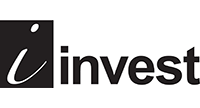With so much information being put out daily about the Covid-19 vaccine, where exactly are we in the race to deliver them worldwide?
The following is an overview of what we know about the race to deliver vaccines to help end the coronavirus pandemic, which has killed more than 1.8 million people worldwide:
WHO IS FURTHEST ALONG?
U.S. drugmaker Pfizer and German partner BioNTech have been the COVID-19 vaccine trailblazers.
On Nov. 18, they became the first in the world to release full late-stage trial data. Britain was the first to approve the shot for emergency use on Dec. 3, followed by Canada on Dec. 9 and the U.S. Food and Drug Administration (FDA) on Dec. 11. Several other countries, including Saudi Arabia and Mexico, have also approved it.
The European Medicines Agency (EMA) approved the shot on Dec. 21 and India is accelerating its review.
The World Health Organization on Thursday listed the vaccine for emergency use, in a move seeking to speed access to it in the developing world.
WHAT ABOUT MODERNA?
Moderna Inc was a close second to Pfizer in many countries after it released a full data analysis for a late-stage trial on Nov. 30 showing a 94.1% efficacy rate for its vaccine.
Moderna Inc was a close second to Pfizer in many countries after it released a full data analysis for a late-stage trial on Nov. 30 showing a 94.1% efficacy rate for its vaccine.
The United States authorised Moderna’s vaccine on Dec. 19, while Canada approved the shot on Dec. 23 and the European Medicines Agency (EMA) will do so on Jan. 6.
ASTRAZENECA
India approval of a two-dose version of AstraZeneca’s vaccine, COVISHIELD, which has also been given the green light by Britain, Argentina and El Salvador, is a major win for a shot seen as crucial for mass immunisations.
Questions about the robustness of its trial data have complicated the approval process.
The British company announced interim late-stage trial data in November showing two full doses were 62% effective while a half-dose followed by a full dose had a 90% success rate – but UK regulators the more successful outcome had not stood up to analysis.
AstraZeneca is also in discussions with the European Union’s European Medicines Agency, which is conducting a rolling review of the vaccine.
WHO ELSE IS IN THE RUNNING?
U.S. drugmaker Johnson & Johnson plans to deliver trial data in January, teeing it up for U.S. authorisation in February if its shot is effective. It reduced the enrolment target for its clinical trial to 40,000 volunteers from 60,000 on Dec. 9, potentially speeding results that are tied to how quickly participants become infected.
U.S. firm Novavax is running a late-stage trial in Britain with data due in the first quarter of 2021. It expects to start a large-scale trial in the United States this month.
France’s Sanofi and Britain’s GlaxoSmithKline , however, announced a setback on Dec. 11 in their attempts to develop a vaccine. The drugmakers said that it showed an insufficient immune response in older people in mid-stage trials and that they would start a new study in February.
WHAT HAPPENS IN THE TRIALS?
The companies usually test their vaccines against a placebo – typically saline solution – in healthy volunteers to see whether the rate of COVID-19 infection among those who got the vaccine is significantly lower than in those who received the dummy shot.
HOW ARE VOLUNTEERS INFECTED?
The trials rely on subjects becoming naturally infected with COVID-19, so how long it takes to generate results largely depends on how pervasive the virus is where trials are being conducted. Each drugmaker has targeted a specific number of infections to trigger a first analysis of their data.
HOW WELL ARE THE VACCINES SUPPOSED TO WORK?
The World Health Organization ideally wants to see at least 70% efficacy. The FDA wants at least 50% – which means there must be at least twice as many infections among volunteers who received a placebo as among those in the vaccine group. The EMA has said it may accept a lower efficacy level.
WHAT ABOUT RUSSIA AND CHINA?
Although Pfizer’s shot was the first to be rolled out following the publication of full Phase III trial data, Russia and China have been inoculating their citizens for months with several different vaccines still undergoing late-stage trials.
China on Dec. 31. approved its first COVID-19 vaccine for general public use, a shot developed by an affiliate of state-backed pharmaceutical giant Sinopharm. The company said it is 79% effective against the virus.
Russia said on Nov. 24 its Sputnik V vaccine, developed by the Gamaleya Institute, was 91.4% effective based on interim late-stage trial results. It started vaccinations in August and has inoculated more than 100,000 people so far.
India plans to make 300 million doses of Sputnik V next year and Argentina has given the green light for emergency use of the shot, with some 300,000 doses arriving in the country on Dec. 24.
China launched an emergency use programme in July aimed at essential workers and others at high risk of infection. It has vaccinated about one million people as of mid-November using at least three shots – 1 developed by the state-backed China National Biotec Group (CNBG) and one by Sinovac Biotech.
Trial data on a COVID-19 vaccine developed by China’s Sinovac Biotech has varied: interim data from a late-stage trial in Turkey showed its CoronaVac shot is 91.25% effective, while researchers in Brazil say the shot was more than 50% effective.
ASTRAZENECA
India approval of a two-dose version of AstraZeneca’s vaccine, COVISHIELD, which has also been given the green light by Britain, Argentina and El Salvador, is a major win for a shot seen as crucial for mass immunisations.
Questions about the robustness of its trial data have complicated the approval process.
The British company announced interim late-stage trial data in November showing two full doses were 62% effective while a half-dose followed by a full dose had a 90% success rate – but UK regulators the more successful outcome had not stood up to analysis.
AstraZeneca is also in discussions with the European Union’s European Medicines Agency, which is conducting a rolling review of the vaccine.
WHO ELSE IS IN THE RUNNING?
U.S. drugmaker Johnson & Johnson plans to deliver trial data in January, teeing it up for U.S. authorisation in February if its shot is effective. It reduced the enrolment target for its clinical trial to 40,000 volunteers from 60,000 on Dec. 9, potentially speeding results that are tied to how quickly participants become infected.
U.S. firm Novavax is running a late-stage trial in Britain with data due in the first quarter of 2021. It expects to start a large-scale trial in the United States this month.
France’s Sanofi and Britain’s GlaxoSmithKline , however, announced a setback on Dec. 11 in their attempts to develop a vaccine. The drugmakers said that it showed an insufficient immune response in older people in mid-stage trials and that they would start a new study in February.
WHAT HAPPENS IN THE TRIALS?
The companies usually test their vaccines against a placebo – typically saline solution – in healthy volunteers to see whether the rate of COVID-19 infection among those who got the vaccine is significantly lower than in those who received the dummy shot.
HOW ARE VOLUNTEERS INFECTED?
The trials rely on subjects becoming naturally infected with COVID-19, so how long it takes to generate results largely depends on how pervasive the virus is where trials are being conducted. Each drugmaker has targeted a specific number of infections to trigger a first analysis of their data.
HOW WELL ARE THE VACCINES SUPPOSED TO WORK?
The World Health Organization ideally wants to see at least 70% efficacy. The FDA wants at least 50% – which means there must be at least twice as many infections among volunteers who received a placebo as among those in the vaccine group. The EMA has said it may accept a lower efficacy level.
WHAT ABOUT RUSSIA AND CHINA?
Although Pfizer’s shot was the first to be rolled out following the publication of full Phase III trial data, Russia and China have been inoculating their citizens for months with several different vaccines still undergoing late-stage trials.
China on Dec. 31. approved its first COVID-19 vaccine for general public use, a shot developed by an affiliate of state-backed pharmaceutical giant Sinopharm. The company said it is 79% effective against the virus.
Russia said on Nov. 24 its Sputnik V vaccine, developed by the Gamaleya Institute, was 91.4% effective based on interim late-stage trial results. It started vaccinations in August and has inoculated more than 100,000 people so far.
India plans to make 300 million doses of Sputnik V next year and Argentina has given the green light for emergency use of the shot, with some 300,000 doses arriving in the country on Dec. 24.
China launched an emergency use programme in July aimed at essential workers and others at high risk of infection. It has vaccinated about one million people as of mid-November using at least three shots – 1 developed by the state-backed China National Biotec Group (CNBG) and one by Sinovac Biotech.
Trial data on a COVID-19 vaccine developed by China’s Sinovac Biotech has varied: interim data from a late-stage trial in Turkey showed its CoronaVac shot is 91.25% effective, while researchers in Brazil say the shot was more than 50% effective.
The United Arab Emirates, meanwhile, said on Dec. 9 that one of the CNBG vaccines was 86% effective based on interim results from a late-stage trial in the Gulf Arab state.
Sourced Reuters
Editing by Caroline Humer, David Clarke, Mark Potter, Josephine Mason, Louise Heavens and Gerry Doyle
For more Finance and Investment news follow i-invest Online.
- AI benefits capital owners more than workers
 A recent study shows the benefits of AI are not evenly distributed, with workers, particularly those in high- and medium-skill occupations, experience declining income shares AI is reducing labour’s share of total income, new research from Vienna University of Economics and Business (WU Wien) has found. In a study of European regions, Klaus Prettner, Professor… Read more: AI benefits capital owners more than workers
A recent study shows the benefits of AI are not evenly distributed, with workers, particularly those in high- and medium-skill occupations, experience declining income shares AI is reducing labour’s share of total income, new research from Vienna University of Economics and Business (WU Wien) has found. In a study of European regions, Klaus Prettner, Professor… Read more: AI benefits capital owners more than workers - Essential reads for the business leader’s seasonal downtime
 From roadmaps for CEOs and directors, to transformative leadership guides, enter 2026 with renewed confidence with these cutting-edge reads from brilliant business minds In our continuing bid to help senior executives and top-tier management navigate today’s rapidly shifting industry landscape, Business 4.0 has curated six essential reads from authors with deep, practical experience in… Read more: Essential reads for the business leader’s seasonal downtime
From roadmaps for CEOs and directors, to transformative leadership guides, enter 2026 with renewed confidence with these cutting-edge reads from brilliant business minds In our continuing bid to help senior executives and top-tier management navigate today’s rapidly shifting industry landscape, Business 4.0 has curated six essential reads from authors with deep, practical experience in… Read more: Essential reads for the business leader’s seasonal downtime - Latest expansion advances Oritain’s mission to be source of global supply chain truth
 Acquisitions of European labs and new membership model positions Oritain to scale origin verification across the world’s most critical supply chains Oritain, a global leader in forensic origin verification, has announced a significant expansion of its scientific network through the phased acquisition of leading laboratories in Europe. These strategic investments grow Oritain’s operational footprint, expand… Read more: Latest expansion advances Oritain’s mission to be source of global supply chain truth
Acquisitions of European labs and new membership model positions Oritain to scale origin verification across the world’s most critical supply chains Oritain, a global leader in forensic origin verification, has announced a significant expansion of its scientific network through the phased acquisition of leading laboratories in Europe. These strategic investments grow Oritain’s operational footprint, expand… Read more: Latest expansion advances Oritain’s mission to be source of global supply chain truth - Use of in-house carbon reporting tools problematic for climate action
 Firms prefer in-house carbon reporting tools, even if they aren’t as accurate as standardised ones, say researchers, who recommend regulators strengthen laws Companies that voluntarily report carbon emissions prefer to use in-house carbon accounting models, even if they are falsely reporting the company’s true emissions, according to recent research by emlyon business school. The researchers… Read more: Use of in-house carbon reporting tools problematic for climate action
Firms prefer in-house carbon reporting tools, even if they aren’t as accurate as standardised ones, say researchers, who recommend regulators strengthen laws Companies that voluntarily report carbon emissions prefer to use in-house carbon accounting models, even if they are falsely reporting the company’s true emissions, according to recent research by emlyon business school. The researchers… Read more: Use of in-house carbon reporting tools problematic for climate action - The invisible shift in risk management
 The smartest organisations are now managing risk through an adaptive governance model that’s appropriate for each scenario, and balances innovation with compliance, says Gordon Van Huizen of Mendix Sometimes in software development, things can sit on your to-do list for years – and it’s a technology-based disruption that pushes them to the top of your… Read more: The invisible shift in risk management
The smartest organisations are now managing risk through an adaptive governance model that’s appropriate for each scenario, and balances innovation with compliance, says Gordon Van Huizen of Mendix Sometimes in software development, things can sit on your to-do list for years – and it’s a technology-based disruption that pushes them to the top of your… Read more: The invisible shift in risk management

